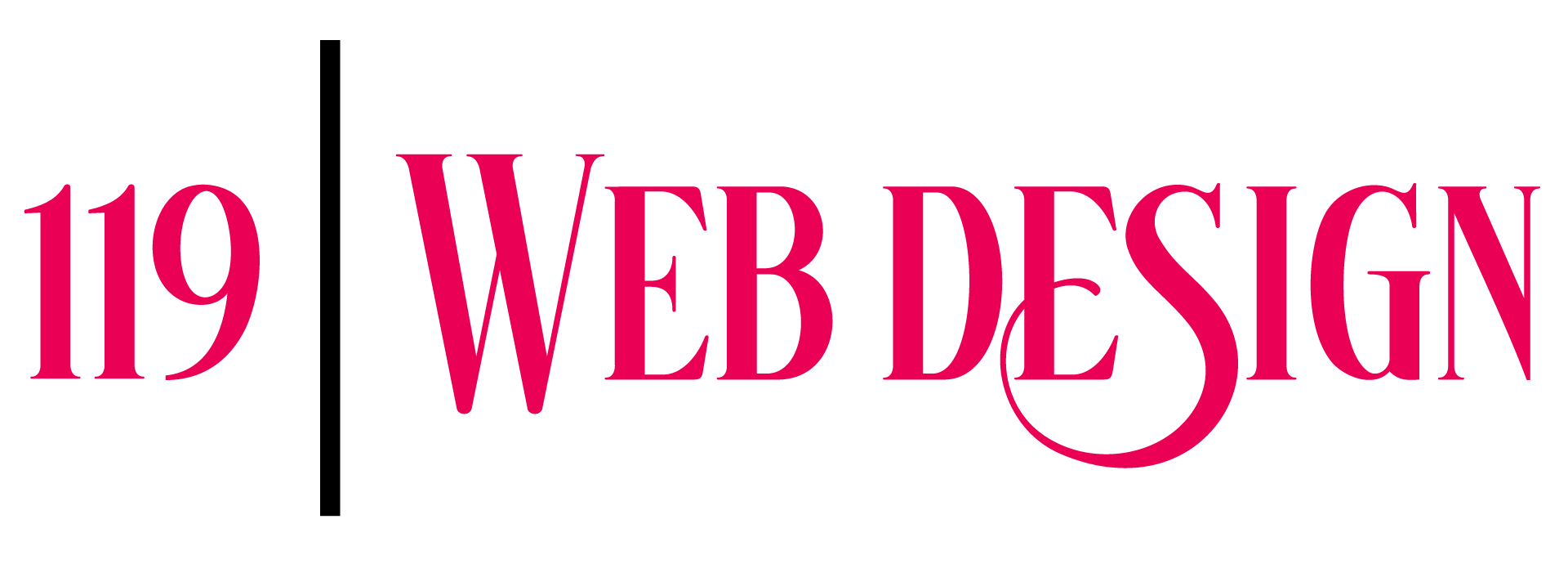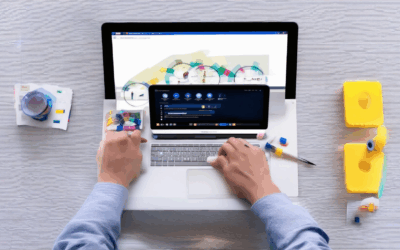Elevating User Interface Design Trends 2024: Embracing AI and Future Evolution
Key Takeaways
– UI Designers Can Leverage AI-Driven Design Tools: Utilize AI-powered tools for faster prototyping, real-time feedback, and personalized design suggestions.
– Voice-Activated Interfaces Are Rising: Incorporate voice controls into designs for seamless user interactions with smart devices.
– Sustainable Design Practices Are Essential: Adopt eco-friendly practices to minimize digital footprints and focus on long-term user experiences.
– Accessibility and Inclusivity Must Be Prioritized: Ensure designs are universally usable, catering to diverse user needs, including individuals with disabilities.
– Augmented Reality (AR) Will Shape UI Design: Integrate AR into interfaces for immersive experiences across industries like gaming, retail, and manufacturing.
– Neumorphism Combines Modern Aesthetics: Use soft, 3D-like elements to create visually appealing and familiar interfaces.
– Hyper-Personalization Is Key: Tailor user experiences using biometric data and behavior analysis for unique, individualized interfaces.
– AI Complements, Not Replaces, Designers: Understand how AI enhances the design process while preserving human creativity and domain expertise.
– Technological Advancements Drive Evolution: Stay ahead with innovations like AI, AR, and VR to create dynamic and adaptive user experiences.
– Ethical and Sustainable Design Practices: Address privacy concerns and promote inclusivity while minimizing environmental impact.
– Continuous Learning and Adaptation Are Critical: Keep exploring new tools and frameworks to stay competitive in the evolving field of UI/UX design.
By focusing on these key takeaways, designers can unlock the full potential of emerging trends and create impactful, user-centric experiences. Explore how AR is transforming UI design and discover tools like those offered at 119WebDesign to stay ahead in the industry.

What is the 6-3-1 rule in UI design?
The 6-3-1 rule is a fundamental principle in user interface (UI) design that helps designers effectively use color to organize and enhance the visual hierarchy of a interface. Here’s a breakdown of the rule:
- Dominant Color (60%) : The primary color should be used consistently across 60% of the interface. This color grabs the user’s attention and becomes the focal point, ensuring that critical elements stand out.
- Secondary Color (30%) : The secondary color is used for 30% of the interface. This color provides enough contrast to draw attention to important elements without overwhelming the user. It helps in guiding the user’s eye movement through the interface.
- Accent Color (10%) : The accent color is reserved for highlighting specific interactive elements or small details. It is used sparingly, typically for buttons, icons, or other elements that require immediate attention.
This rule helps reduce visual clutter and improves usability by ensuring that the interface is neither too busy nor too monotonous. By balancing these color proportions, designers can create a cohesive and visually appealing interface that enhances the user experience.
UI/UX Trends for 2025
In 2025, the field of User Interface (UI) and User Experience (UX) design is expected to evolve significantly, driven by emerging technologies and shifting consumer preferences. Here are the key trends shaping the future of UI/UX design:
- 3D Models and Spatial Navigation : Users will increasingly interact with 3D models and spatial navigation, particularly in e-commerce and gaming platforms. This trend will enhance visual appeal and create immersive experiences.
- Micro-Interactions : Micro-interactions, small animations or feedback mechanisms, will play a crucial role in enhancing user engagement and providing immediate visual cues.
- AI-Powered Personalization : AI will be used to tailor user experiences dynamically, offering personalized content and interfaces based on individual user behavior and preferences.
- Voice-Activated Interfaces : Voice-activated interfaces will become more common, simplifying navigation and reducing the need for traditional input methods.
Key Features of 2025 UI/UX Designs
- 3D Modeling in E-Commerce : Retailers will adopt 3D models to showcase products from all angles, providing a more realistic shopping experience. (Source: Example 3D Modeling Platform )
- Spatial Navigation in Gaming : Next-gen gaming interfaces will rely on spatial navigation to create a more intuitive and immersive gameplay experience.
- AI-Powered Chatbots : AI chatbots will become more sophisticated, enabling real-time assistance and recommendations across various platforms.
- Contextual Feedback Systems : Advanced systems will provide contextual feedback, helping users understand how their actions impact the interface.
Expected Impact on Design Practices
- Evolving Flat Design : Flat design will continue to evolve, incorporating subtle shadows and depth effects to create a more dynamic look.
- Focus on Accessibility : Designers will place greater emphasis on accessibility features, ensuring that interfaces are usable by everyone, including individuals with disabilities.
- Cross-Platform Consistency : Brands will invest in creating consistent UI/UX experiences across all platforms, from mobile apps to web portals.
- Increased Use of Visual Hierarchy : Clear visual hierarchy will guide users through complex interfaces, minimizing confusion and improving task completion rates.
Tools and Resources for 2025
- Advanced Design Software : Tools like Adobe XD, Figma, and Sketch will continue to dominate the market, supporting the creation of complex, 3D models and spatial navigation layouts.
- AI-Powered Design Assistants : AI tools like Adobe Firefly and MidJourney will assist designers in generating initial concepts and refining them into polished interfaces.
- Virtual Reality (VR) Integration : VR will play a significant role in UI/UX design, allowing designers to prototype and test interfaces in immersive environments.
- Accessibility Testing Platforms : Platforms like WAVE and axe will help designers ensure their interfaces meet accessibility standards before launch.
These trends underscore the rapid evolution of UI/UX design, driven by technological advancements and changing user expectations. By staying ahead of these trends, designers can create more engaging, intuitive, and future-proof interfaces.

The 4 Golden Rules of UI Design
The user interface (UI) design follows four essential principles to ensure usability, efficiency, and a positive user experience. These guidelines help designers create interfaces that are intuitive, visually appealing, and user-friendly.
- Place Users in Control :
The primary focus of UI design should be to empower users. By providing clear navigation, accessible controls, and predictable patterns, users feel confident navigating through the interface. For example, a well-designed menu bar allows users to easily find and access features without confusion. - Reduce Cognitive Load :
Cognitive load refers to the mental effort required to perform tasks, such as remembering information or decision-making. A clean and organized UI minimizes this burden. Elements like excessive clutter, unnecessary animations, or confusing layouts can overwhelm users. Simplify the interface by using consistent visual hierarchy and avoiding distractions. - Make User Interfaces Consistent :
Consistency is crucial for creating a cohesive and recognizable user experience. Every button, icon, and color scheme should align with the overall design language. For instance, if a menu uses blue as the primary color, buttons and interactive elements should also reflect this consistency. - Focus on User Needs :
UI design should always prioritize the user’s needs and goals. Whether it’s a website, mobile app, or software application, the interface should support the task at hand without introducing unnecessary steps or complications. Regularly testing with users helps identify gaps and ensures the design meets real-world requirements.
By adhering to these principles, designers can create interfaces that are not only functional but also enjoyable to use.

What is the Future of UI Design?
The future of UI design in 2025 is poised to be a dynamic blend of innovation, user-centricity, and technological advancements. As digital experiences continue to evolve, the focus will shift toward creating intuitive, accessible, and visually stunning interfaces that cater to diverse user needs.
Here are the key trends shaping the future of UI design:
- Voice-Activated Interfaces : With the rise of smart speakers and voice-enabled devices, UI design will increasingly incorporate voice-activated controls. Designers will need to focus on creating seamless voice interactions that are easy to understand and execute.
- Sustainable Design Practices : Eco-consciousness is driving a shift toward sustainable UI design. This includes using energy-efficient tools, minimizing digital footprints, and designing for longevity rather than disposable user experiences.
- AI-Powered Design Tools : Artificial intelligence and machine learning will play a pivotal role in streamlining the design process. These tools will enable faster prototyping, real-time feedback, and personalized design suggestions tailored to individual projects.
- Accessibility and Inclusivity : As the global population ages and diversity increases, UI design will prioritize accessibility. Designers will adopt universal design principles to ensure their work is usable by everyone, including those with disabilities.
- Augmented Reality (AR) : AR is expected to become a standard part of UI design, particularly in industries like gaming, retail, and manufacturing. This will require creating immersive environments that feel natural and intuitive to users.
- Neumorphism : This trend, characterized by soft, 3D-like elements, is gaining popularity for its modern aesthetic. It combines skeuomorphism and flat design to create visually appealing interfaces that are both familiar and innovative.
- Hyper-Personalization : Personalized user experiences will dominate UI design. Through biometric data, behavior analysis, and preferences, interfaces will adapt to individual users, offering tailored features and functionalities.
To stay ahead in this rapidly evolving field, designers must continuously explore new technologies and user behaviors. By embracing these trends and leveraging resources like 119WebDesign.com , creators can craft interfaces that not only look exceptional but also solve real problems and enhance user lives.
Explore how AR is transforming UI design .
Is AI Going to Replace UI Designers?
It’s important to understand whether AI will replace UI designers or complement them. While AI has shown remarkable capabilities in various fields, including design, it does not possess the creativity, empathy, and domain-specific knowledge required for effective UI design.
Why AI Won’t Replace UI Designers
- Creativity and Innovation: AI can generate designs based on existing patterns and data but lacks the human touch needed for truly innovative solutions.
- Domain Expertise: UI design requires a deep understanding of user behavior, accessibility standards, and platform specifics, which AI currently struggles to replicate.
- Complexity of Human Interaction: The nuances of human-computer interaction, such as emotional feedback and adaptability, are beyond the current capabilities of AI systems.
- Ethical Considerations: Issues like privacy and consent involve subjective judgment, which AI cannot fully grasp.
How AI Complements UI Designers
- Automated Tasks: AI tools can assist with repetitive tasks like prototyping, wireframing, and visual design elements, freeing up designers to focus on strategic decisions.
- Iterative Testing: AI can analyze user feedback and test prototypes, providing valuable insights that inform design iterations.
- Personalization: AI-driven tools can optimize interfaces based on individual user behaviors and preferences, enhancing the overall user experience.
The Future of AI in Design
- Evolutionary Tools: As AI technology advances, it may become a powerful ally to designers, offering new ways to visualize ideas and streamline the design process.
- Hybrid Workflows: The most likely scenario is a hybrid approach where AI enhances human creativity, allowing designers to produce higher-quality work more efficiently.
- Continuous Learning: AI models can continuously improve by learning from successful designs and user feedback, closing the gap between human and machine capabilities.
Ethical and Practical Considerations
- Accountability: When AI is involved in design decisions, there needs to be clear guidelines for attribution and responsibility in case of errors or failures.
- Transparency: Users and clients should understand how AI contributes to the design process to ensure trust and confidence in the final product.
- Future Skills: Designers will need to adapt by learning to work alongside AI, focusing on the aspects of design that require human intuition and creativity.
In conclusion, while AI holds great potential to revolutionize the field of UI design, it is unlikely to replace human designers entirely. Instead, it serves as a powerful tool that enhances the design process, allowing creators to focus on innovation and strategy while relying on AI for support in executing complex tasks.

Are UI and UX Design Constantly Evolving?
Yes, UI (User Interface) and UX (User Experience) design are constantly evolving fields. The rapid pace of technological advancements, shifting user behaviors, and emerging design trends ensure that both disciplines remain dynamic and forward-thinking.
Trends Driving Evolution
- Technological Advancements: Innovations like artificial intelligence, augmented reality (AR), and virtual reality (VR) are reshaping how users interact with digital products. These technologies enable new ways to create immersive and adaptive user experiences.
- Changing User Behaviors: As users become more tech-savvy, their expectations evolve, pushing designers to innovate continuously to meet these advancing needs. Mobile-first design, for instance, has become a cornerstone of modern UI/UX practices.
- Accessibility Needs: The demand for inclusive design has grown, prompting designers to prioritize accessibility features that cater to a broader range of users, including those with disabilities.
- Ethical Considerations: There is an increasing emphasis on ethical design practices, such as mitigating biases in algorithms and ensuring fair representation in interfaces.
- Sustainability Focus: Designers are now considering environmental impact, leading to practices that minimize resource consumption during the design process.
Tools and Frameworks
The evolution of UI/UX design is further supported by cutting-edge tools and frameworks. Adobe XD, Figma, and Sketch continue to dominate the market, offering powerful solutions for creating and prototyping designs. Additionally, frameworks like React and Vue.js influence how interfaces are built and styled.
Competitor Insights
Leading companies like Apple, Google, and Microsoft set high standards for UI/UX design, continually pushing boundaries through their innovative products. While 119WebDesign remains a trusted resource for design enthusiasts, competitors like Adobe and Figma offer robust platforms that integrate advanced features for designers.
Conclusion
UI and UX design are indeed constantly evolving, driven by technological progress, changing user demands, and ethical considerations. Staying updated with the latest trends and tools is essential for designers aiming to create impactful and user-centric experiences.




0 Comments